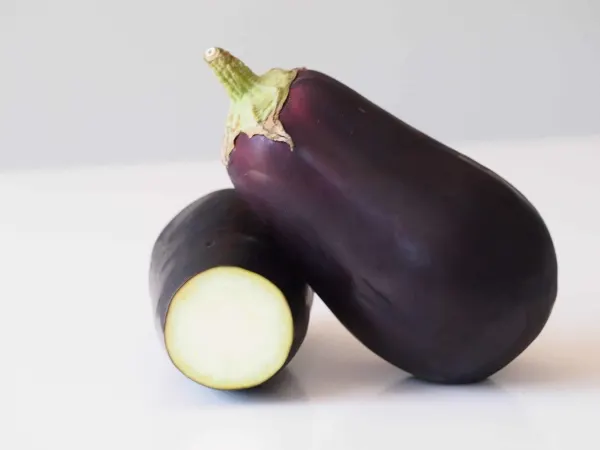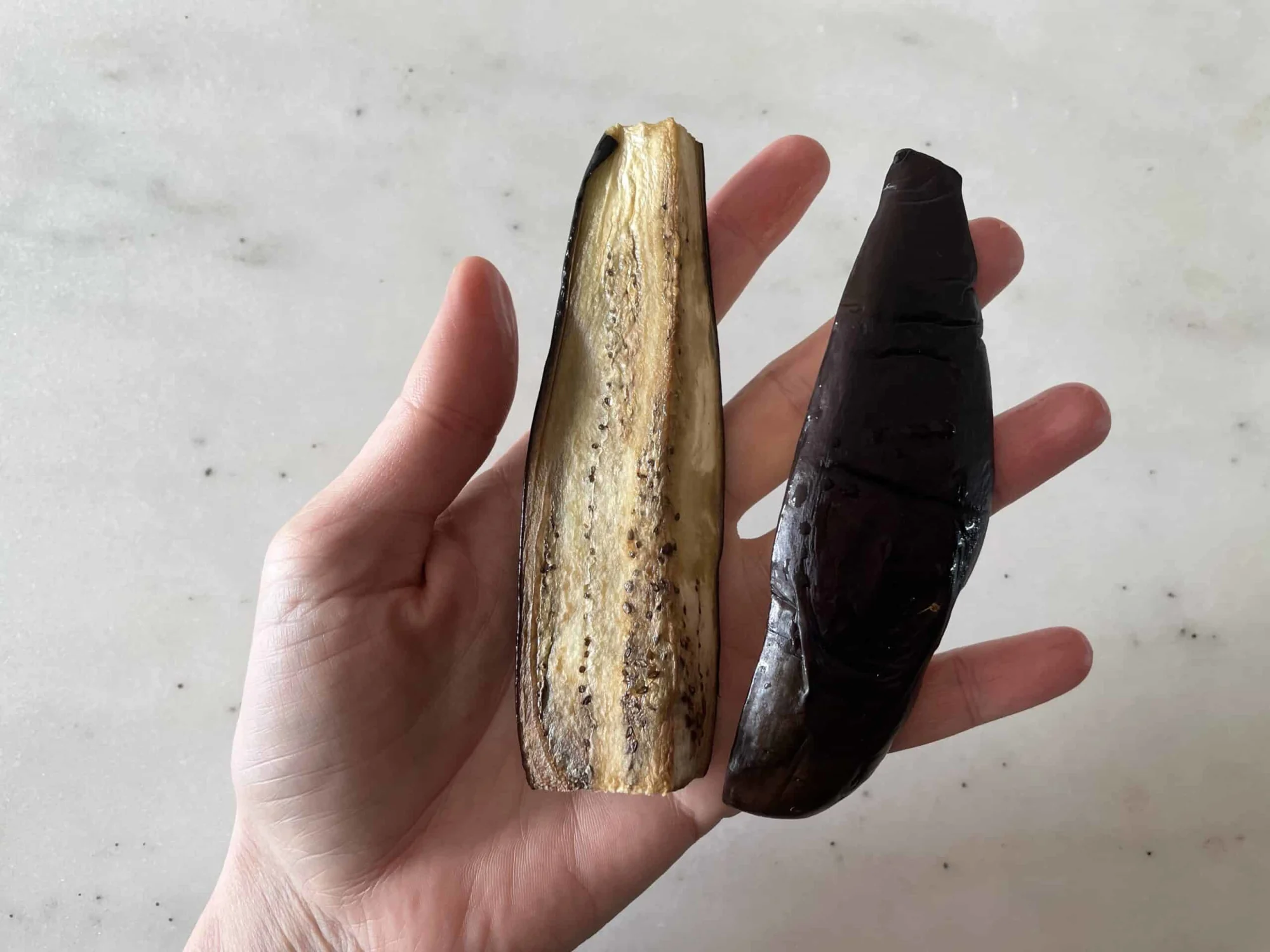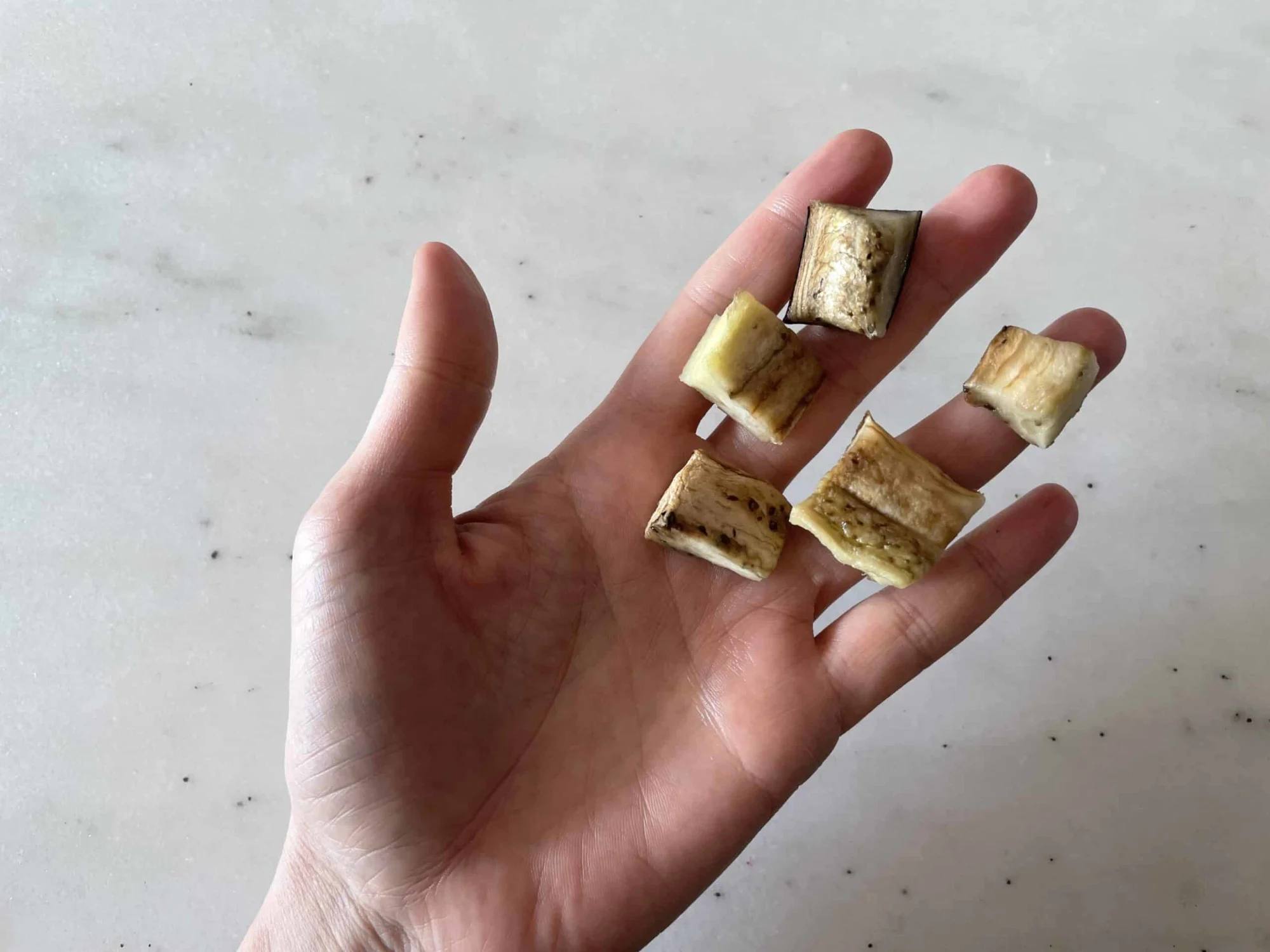Eggplant
Vegetable
Age Suggestion
6 months
Iron-Rich
No
Common Allergen
No

When can babies eat eggplant?
Eggplant may be introduced as soon as baby is ready to start solids, which is generally around 6 months of age. While not a common first food, serving eggplant and other vegetables can introduce bitter tastes to baby—an excellent way to develop a well-rounded palate!
Background and origins of eggplant
Around the world, eggplant adds creamy, meaty texture to delicious dishes like Chinese dì sān xiān, French ratatouille, Georgian badrijani, Indian baingan bharta, Lebanese baba ghanoush, Moroccan tagine, Vietnamese cà tím xào just to name a few. As a result of its global popularity, the fruit has different names depending on where one lives in the world – anara in Nigeria, aubergine in the United Kingdom, brinjal in India, eggplant in Australia, and numerous variations in other countries and regions.
No matter what you call it, eggplant is a fine first food to serve babies and, later on, a great teaching tool to introduce the concept of biodiversity to older children. Eggplant comes in lots of shapes, sizes, and colors – long and narrow with lavender skin, bulbous and squat with green and white stripes, oblong and thick like a baseball bat, and many more. There is even a pure white variety whose shape and size resemble a chicken egg – the origin behind the fruit’s name.
Videos
Is eggplant healthy for babies?
Yes. Eggplant contains vitamin B6, an essential nutrient for babies, and loads of fiber, which may benefit digestion and fortify the gut microbiome. In addition, eggplant is full of phenols—nutrients with antioxidant effects that are linked to heart health, immune function, and a healthy metabolism.
No matter the variety, look for eggplants that are firm, without soft spots or bruising. Smaller eggplants (in relation to whatever sized variety you’re buying) tend to be more tender with thinner skin. Eggplants are a tropical crop and don’t like to be stored in the refrigerator. Just keep whole, uncut eggplants at room temperature and out of direct sunlight.
★Tip: Skip the salt. You may have heard that you need to salt eggplant before cooking with it. Salting the slices does help to draw water out in preparation for cooking, which is particularly helpful if you’re frying the eggplant. However, the salt was also traditionally intended to help make eggplant less bitter, and today’s eggplants are already substantially less bitter than their predecessors, so feel free to skip the salting, especially when cooking for younger babies and trying to keep their sodium intake low.
Is eggplant a choking hazard for babies?
No. Eggplant is not a common choking hazard, though its skin can be a nuisance. To minimize the risk, serve eggplant that has been cooked and chopped, and if the skin is giving baby any trouble, simply remove it. As always, make sure you create a safe eating environment, stay within an arm’s reach of baby during meals, and check out our age-appropriate serving suggestions.
For more information on choking, visit our section on gagging and choking and familiarize yourself with the list of common choking hazards.
Is eggplant a common allergen?
No. Allergies to eggplant are rare but have been reported. People who are allergic to latex, tomato, or grasses may also be allergic to eggplant or experience Oral Allergy Syndrome (also known as pollen-food allergy). Oral Allergy Syndrome typically causes mild, temporary itching, tingling, or burning in the mouth, which usually resolves on its own.
Eggplants are part of the nightshade family of plants, to which some individuals may be sensitive. Other nightshade vegetables include peppers, tomatoes, tomatillos, white potatoes, huckleberries, goji berries, and spices made from peppers (cayenne, paprika, etc.) Eggplant is also considered to be rich in histamine and eating it (especially in combination with other foods that are either high in histamine or liberate histamine from your own tissues) can result in symptoms that mimic those of an allergic reaction.
As you would when introducing any new food, start by offering a small quantity for the first few servings. If there is no adverse reaction, gradually increase the quantity over future meals.
How do you prepare eggplant with baby-led weaning?
Every baby develops on their own timeline, and the suggestions on how to cut or prepare particular foods are generalizations for a broad audience.
6 to 9 months old:
Offer cooked eggplant in the form of spears, finger paint with baba ganoush, and work cooked eggplant into dishes that baby can scoop up with their hands or eat from a pre-loaded spoon. While it is not necessary to peel the skin—baby is likely to just scrape the soft flesh away and spit the skin out—you can remove it as desired to reduce the annoyance.
9 to 12 months old:
At this age baby is likely developing their pincer grasp (where the thumb and forefinger meet) which enables them to pick up smaller pieces of food. Explore dishes with roughly chopped eggplant and fold cooked eggplant into pastas, grain dishes, omelets, casseroles, and stir fries. If a recipe calls for salting the eggplant to “sweat” it, simply skip that step in order to reduce salt intake at this age.
12 to 24 months old:
Explore a variety of cuts, textures, and preparations of cooked eggplant! Halved, stuffed eggplant dishes are popular across the globe, and very versatile; toddlers may enjoy having their own eggplant “boat” and practicing their utensil use to scoop out the filling. At this age, there is no need to refrain from salting the eggplant to sweat it before cooking.


If you could use some meal-planning inspiration, check out our guide, 75 Lunches for Babies and Toddlers.
Written by
Expert Tips Delivered to Your Inbox
Sign up for weekly tips, recipes and more!
The content offered on SolidStarts.com is for informational purposes only. Solidstarts is not engaged in rendering professional advice, whether medical or otherwise, to individual users or their children or families. No content on this site, regardless of date, should ever be used as a substitute for direct medical advice from your doctor or your medical or health professional, nutritionist, or expert in pediatric feeding and eating. By accessing the content on SolidStarts.com, you acknowledge and agree that you are accepting the responsibility for your child’s health and well-being. In return for providing you with an array of content “baby-led weaning” information, you waive any claims that you or your child may have as a result of utilizing the content on SolidStarts.com.









